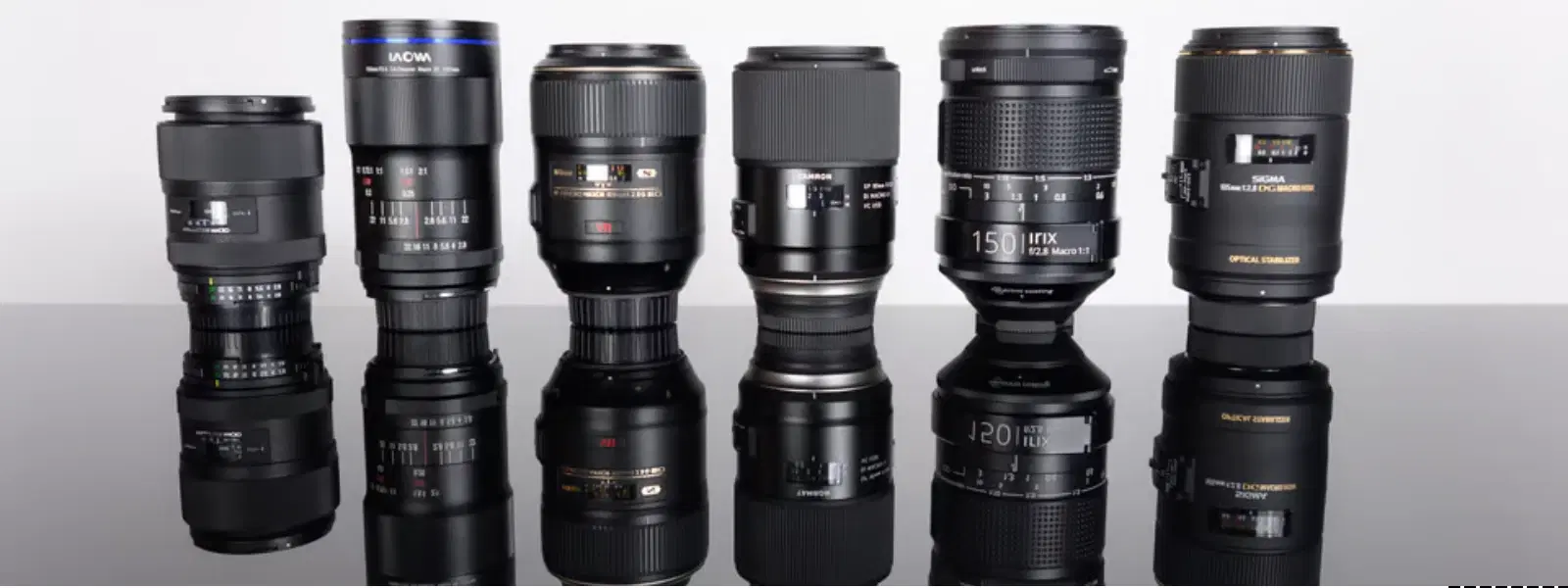
Consumer Electronics
•03 min read
Imagine capturing the intricate details of a butterfly’s wings or the delicate texture of a flower petal. In the realm of close-up photography, the choice of lens is crucial to showcase every nuance. While macro lenses and close focus lenses are both popular, each brings its own strengths to the table. By exploring the key differences between these lenses, you can determine which one best suits your creative needs.
A macro lens is a specialised piece of equipment designed to capture life-size images of tiny subjects with true 1:1 magnification. This means that when you take a shot, the subject appears the same size on your camera sensor as it does in real life. Ideal for macro photography, such a lens is perfect for revealing the hidden details in flowers, insects, and textures that are often missed by the naked eye.
Macro lenses vary in terms of focal length. Short macro lenses between 35mm and 60mm are suited for controlled environments and small subjects, while midrange options (typically 80mm to 105mm) offer greater versatility and ease of use. For scenarios where you need more working distance—such as photographing insects in their natural habitat—long macro lenses (150mm to 200mm) are the preferred choice.
In contrast to a dedicated macro lens, a close focus lens allows you to focus on subjects at relatively short distances but does not achieve the true 1:1 magnification that defines a macro lens. This makes it a versatile option for those who are interested in casual close-up photography and other genres such as portraiture.
A good example is a 50mm lens with close focus capabilities. While it won’t give you the extreme magnified detail of a macro lens, it performs admirably for capturing small objects, food, or detailed backgrounds in portraits. The ability to work at shorter distances makes a close focus lens ideal for everyday photography where convenience and flexibility are key.
The primary difference between macro and close focus lenses lies in their magnification capabilities. A macro lens offers true 1:1 magnification, delivering life-size detail that is perfect for extreme close-up shots. This high magnification is essential when you want to capture every tiny element of a subject. On the other hand, close focus lenses provide a limited magnification which is typically less than 1:1, making them suitable for general use without the need for extreme detail.
Working distance is another important factor. Macro lenses are designed with longer working distances, allowing you to photograph small subjects without disturbing them, making them ideal for sensitive subjects such as insects. Close focus lenses, with their shorter working distances, are better suited for situations where a slight intrusion is not a concern.
Depth of field is also a crucial consideration. Macro lenses typically yield a shallow depth of field, meaning that precise focus is essential to keep the subject sharp. Conversely, close focus lenses generally provide a greater depth of field, which can be advantageous for casual photography as it offers a broader range of focus. Price and accessibility vary as well; high magnification and specialised features make macro lenses generally more expensive, while close focus lenses tend to be more affordable and ideal for beginners.
Your decision should begin with evaluating the subject you intend to photograph. For miniature subjects like insects, delicate flowers, or intricately designed jewellery, a macro lens is a solid choice as it offers exceptional detail and clarity. If, however, your interest lies in shooting food, still life compositions, or portraits with nuanced backgrounds, the flexibility of a close focus lens might be more appropriate.
Consider also your overall photography style. A dedicated photographer specialising in macro photography will benefit from the high magnification of a macro camera lens. Meanwhile, hobbyists or those new to the field may find the multipurpose nature of a close focus lens more appealing. Budgetary constraints are equally important to consider. While investing in a macro lens can be rewarding, many find that exploring macro photography using adaptable close focus lenses offers a practical starting point without a heavy financial commitment.
Did you know that a true macro lens offers 1:1 magnification, meaning the subject appears life-size on your camera’s sensor? Close focus lenses, on the other hand, typically provide a lower magnification ratio, making them more versatile but less detailed for extreme close-ups.
No, a 24mm lens is not typically considered a macro lens, as it does not achieve the 1:1 magnification required for true macro photography. However, some 24mm lenses may have close focus capabilities.
A macro lens is designed for extreme close-ups with true magnification, while a zoom lens allows you to change focal lengths and is more versatile, though it is not specialised for capturing the minute details that a macro lens can.
A 50mm lens is not inherently a macro lens, but certain 50mm models come with close focus features that enable them to be used for casual close-up photography.
In summary, both macro lenses and close focus lenses come with unique benefits tailored to different photography needs. If capturing every minute detail is your priority, then a macro camera lens is the ideal option. However, if versatility and ease of use are more important, a close focus lens might be the better investment. By understanding the distinctions and applications of each lens type, you can enhance your close-up photography and bring out the beauty in even the smallest subjects. Remember, every purchase on Tata Neu brings added rewards through NeuCoins, offering you extra savings while investing in technology that enriches your lifestyle.